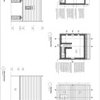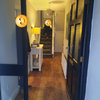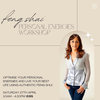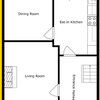Under cupbard LED lighting strips
always ot
3 years ago
last modified: 3 years ago

Sponsored
Reload the page to not see this specific ad anymore
We have a galley style kitchen (old pic attached), with continuous cabinets 2.73m long down one side, and approx 2m long down other side (split across 3 separate cabinets) with cooker/cooker hood in between.
We used to have 9 x 20w halogen spot lights, that never really worked (often came loose, then started buzzing), and have been off for the past few years. This makes the kitchen dark, especially at the sink/washing up end.
I now want to fit LED under cupboard lighting, and am considering LED linkable stiplights (fixed kind, not flexible sticky tape), instead of spots.
My questions, in no particular order:
- When fitting strips, is it expected to run strips the entire length of all available cabinets, or should there be gaps in between (like with spots)?
- To fill all available space under the cabinets, would take 57-61W of LED (cool white) lighting. Is this likely to be too much?
- Are LED linkable stiplights a good idea for the kitchen below?


Reload the page to not see this specific ad anymore
Houzz uses cookies and similar technologies to personalise my experience, serve me relevant content, and improve Houzz products and services. By clicking ‘Accept’ I agree to this, as further described in the Houzz Cookie Policy. I can reject non-essential cookies by clicking ‘Manage Preferences’.





cavgirl
always otOriginal Author
Dual Designs
always otOriginal Author
Phil Scott
always otOriginal Author